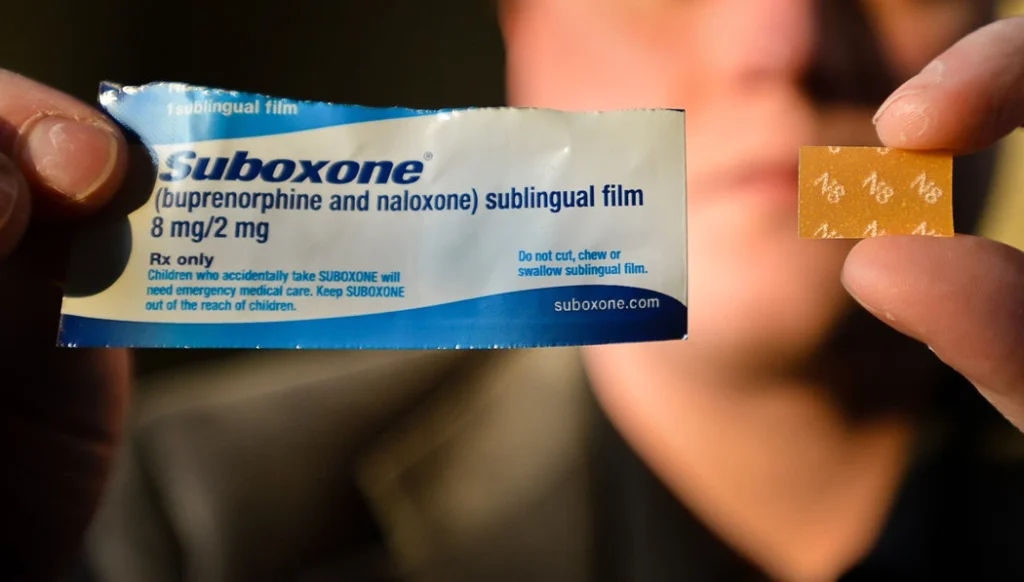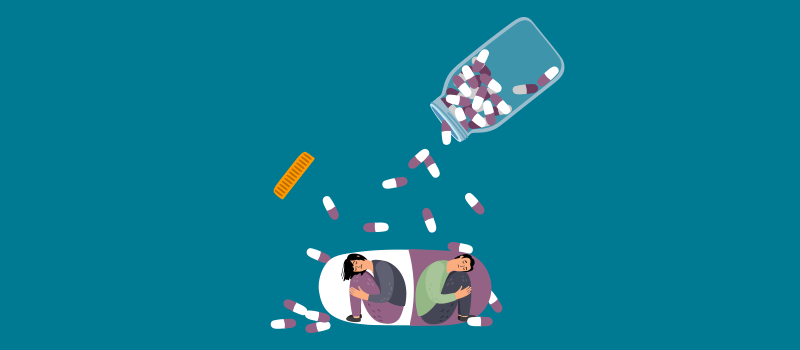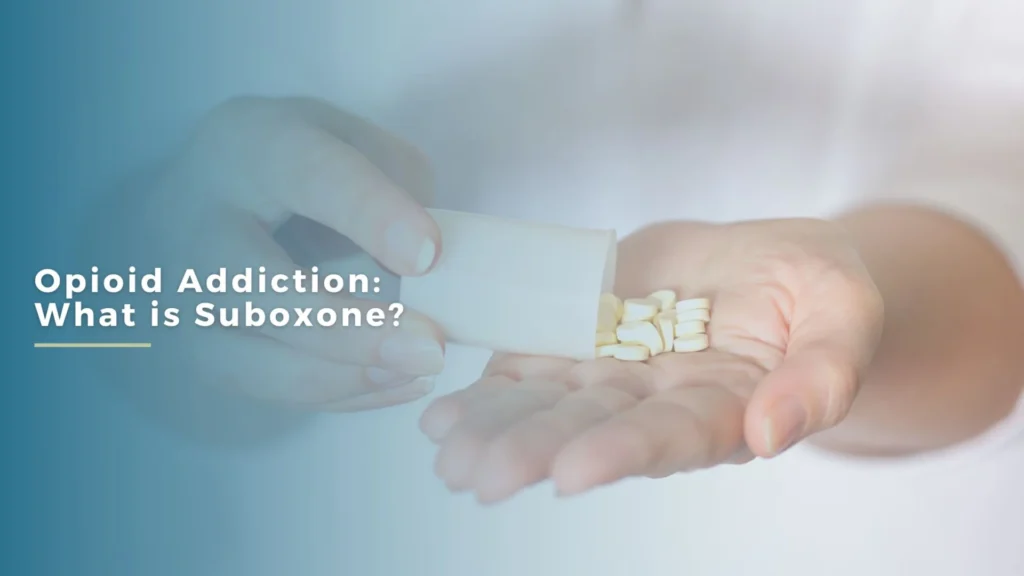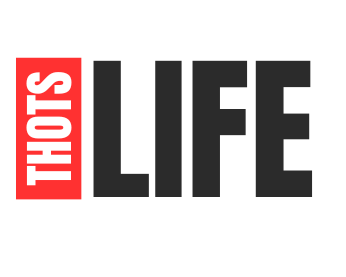Suboxone, a medication approved for use in treating opioid dependency, is frequently prescribed as part of a comprehensive treatment plan. Designed to address cravings, it has become a widely utilized tool in recovery programs.
How Suboxone Works to Curb Opioid Cravings
Suboxone is a combination medication that contains two active ingredients: buprenorphine and naloxone. Each component contributes differently to the process of curbing cravings and supporting recovery.

Opioid addiction is a serious and complex condition that affects millions of people worldwide. One of the biggest challenges in recovery is managing opioid cravings, which can lead to relapse. Suboxone, a medication that combines buprenorphine and naloxone, has become a key treatment in medication-assisted therapy (MAT) for opioid use disorder (OUD).
Understanding Opioid Addiction
Opioid addiction, also known as opioid use disorder (OUD), is a medical condition that leads to a compulsive need to use opioids despite harmful consequences. Opioids change the way the brain functions, leading to both physical dependence and psychological addiction.
How Opioids Affect the Brain
- Opioids bind to receptors in the brain, creating a feeling of pleasure and pain relief.
- With prolonged use, the brain adapts to opioids and relies on them for normal function.
- Stopping opioid use suddenly can cause withdrawal symptoms, leading to intense cravings.
- These cravings often drive people to relapse, making it difficult to quit without assistance.
What Are Opioid Cravings?
Opioid cravings are strong urges to use opioids, triggered by physical withdrawal symptoms and psychological dependence. These cravings can be overwhelming and difficult to resist.
Common Triggers for Opioid Cravings:
✔ Withdrawal symptoms (pain, nausea, restlessness)
✔ Emotional stress (anxiety, depression)
✔ Environmental cues (places or people associated with past drug use)
✔ Pain or discomfort that opioids previously relieved
Without proper treatment, cravings can increase the risk of relapse and make recovery challenging. This is where Suboxone plays a crucial role.
How Suboxone Works in Opioid Recovery

Suboxone is a prescription medication approved for opioid dependency treatment. It contains two active ingredients:
- Buprenorphine – A partial opioid agonist that reduces cravings and withdrawal symptoms without producing a strong “high.”
- Naloxone – An opioid antagonist that blocks opioid effects and discourages misuse.
How Suboxone Helps Reduce Opioid Cravings
| Suboxone Component | Function in Opioid Recovery |
|---|---|
| Buprenorphine (Partial Opioid Agonist) | Activates opioid receptors partially, reducing cravings and withdrawal symptoms without causing euphoria. |
| Naloxone (Opioid Antagonist) | Blocks opioid effects and prevents misuse by triggering withdrawal if injected improperly. |
Suboxone stabilizes brain chemistry, allowing individuals to function normally while reducing their dependence on opioids.
Buprenorphine: The Key to Reducing Cravings
Buprenorphine is the primary ingredient in Suboxone. It binds to the same opioid receptors as heroin or prescription opioids but activates them only partially.
The primary component of Suboxone, buprenorphine, is a partial opioid agonist. This means it interacts with the same receptors in the brain that opioids target.
How Buprenorphine Works:
✔ Reduces withdrawal symptoms (helps patients feel normal)
✔ Decreases cravings (makes it easier to avoid opioids)
✔ Has a ceiling effect (taking more will not produce a stronger high)
✔ Prevents relapse by blocking other opioids from binding to receptors
Because buprenorphine does not produce a strong high, it is less likely to be misused than full opioids.
Naloxone: Preventing Opioid Misuse
Naloxone is included in Suboxone to prevent people from misusing the medication. If Suboxone is taken correctly as a film or tablet, naloxone has no effect.
How Naloxone Works:
Prevents misuse – If someone tries to inject Suboxone, naloxone will cause withdrawal symptoms.
Blocks opioid effects – Prevents other opioids from having an impact.
Encourages proper use – Discourages individuals from abusing the medication.
This combination of buprenorphine and naloxone makes Suboxone an effective and safe treatment for opioid addiction.
Why Suboxone Is Effective for Opioid Addiction

Benefits of Suboxone:
✔ Reduces opioid cravings – Allows individuals to focus on recovery.
✔ Minimizes withdrawal symptoms – Makes quitting opioids more manageable.
✔ Lower risk of overdose – The ceiling effect reduces the chance of misuse.
✔ Increases retention in treatment – Patients on Suboxone are more likely to stay in treatment.
✔ Supports long-term recovery – Helps individuals transition to a drug-free life.
Is Suboxone Right for You?
Suboxone is an option for individuals who:
Have moderate to severe opioid addiction
Have tried quitting opioids but experienced intense cravings
Want a medication-assisted treatment to aid recovery
Are under a doctor’s supervision and committed to a treatment plan
The Importance of Professional Treatment
While Suboxone is highly effective, it works best when combined with counseling and behavioral therapy. Medication alone does not address the psychological aspects of addiction.
Comprehensive Opioid Addiction Treatment Includes:
Suboxone medication – Reduces cravings and withdrawal symptoms
Counseling and therapy – Helps address the emotional and behavioral aspects of addiction
Support groups and peer support – Provides encouragement and accountability
Medical supervision – Ensures safe and effective treatment
Potential Side Effects of Suboxone
Although Suboxone is safe when taken as prescribed, it may cause side effects, including:
- Headache
- Nausea or vomiting
- Constipation
- Insomnia
- Dizziness
Most side effects improve over time, but patients should speak with their doctor if they experience persistent issues.
Example: How Suboxone Helped One Person Overcome Opioid Addiction
John’s Story:
John struggled with opioid addiction for several years after being prescribed painkillers for an injury. Each time he tried to quit, he faced intense withdrawal symptoms and cravings, leading to relapse.
After starting Suboxone treatment, John noticed an immediate reduction in cravings. He no longer felt the urge to use opioids and was able to focus on therapy and rebuilding his life. Today, John has been opioid-free for two years, thanks to a combination of Suboxone, counseling, and a strong support system.
More Know: Spinal Cord Stimulation: A Modern Solution for Chronic Pain Relief
Conclusion
Suboxone is a proven and effective medication-assisted treatment for opioid addiction. By reducing cravings, minimizing withdrawal symptoms, and preventing opioid misuse, it helps individuals achieve long-term recovery.
However, Suboxone is not a cure – it should be used alongside counseling and behavioral therapy for the best results. If you or a loved one is struggling with opioid addiction, consider speaking with a healthcare provider about whether Suboxone is the right option.
Summary
For the best results, Suboxone should be used with therapy and professional medical support. Suboxone is a medication that helps reduce opioid cravings and withdrawal symptoms.
It contains buprenorphine (which eases cravings) and naloxone (which prevents misuse). Suboxone blocks other opioids from taking effect, reducing the risk of relapse. The ceiling effect makes it safer and less likely to cause overdose.

